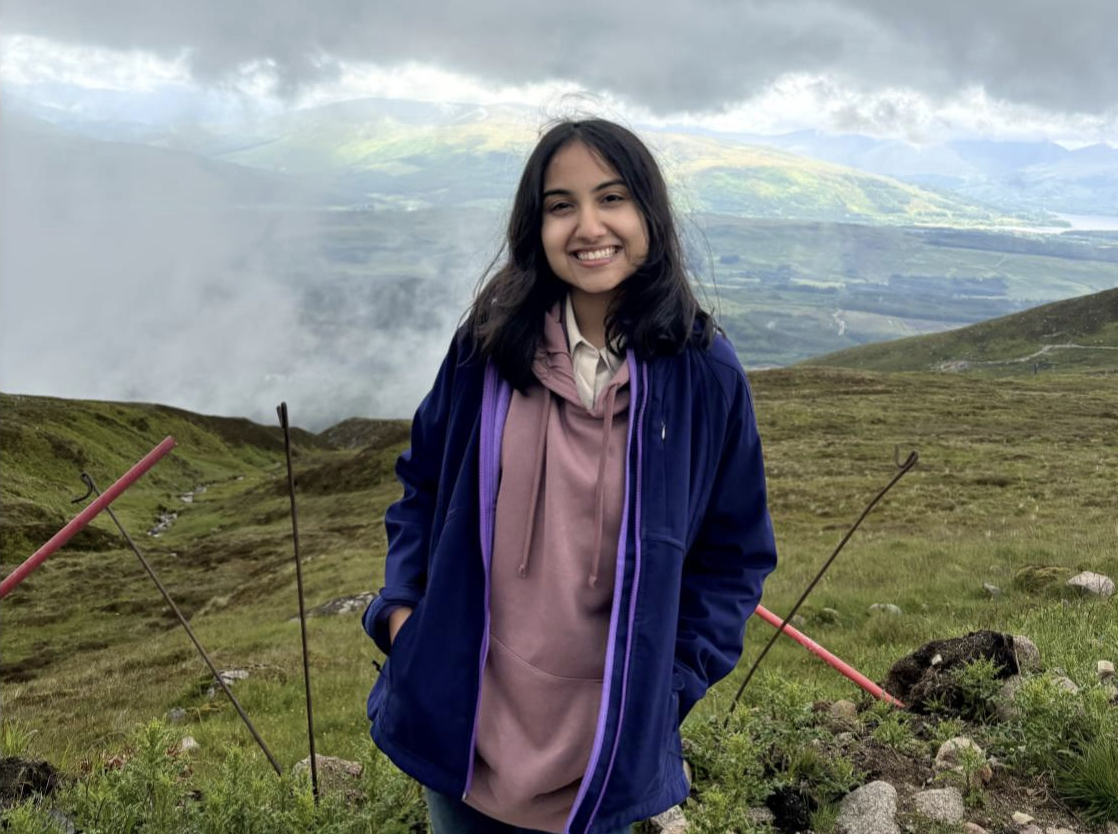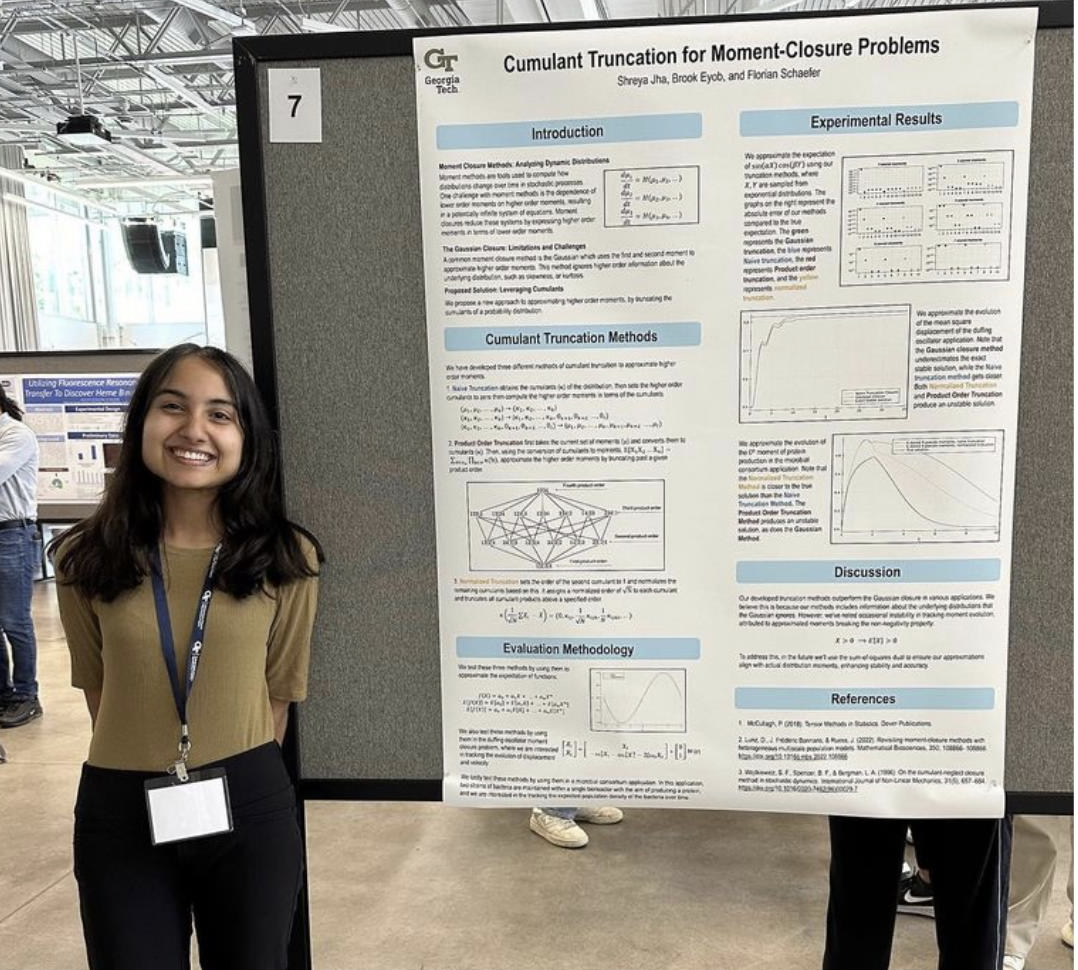Shreya Jha is a fourth-year mathematics and computer science major studying higher order statistics with Dr. Florian Schaefer.

How long have you been an undergraduate researcher at Georgia Tech?
I've been involved in research at Georgia Tech since my second semester of freshman year, so about 2.5 years now. I initially started through the VIP program, and about a year later, I transitioned to working with Dr. Schaefer.
How did you get involved with undergraduate research?
Even before coming to Georgia Tech, I was drawn to the versatility of math and computer science. I knew early on that I wanted to contribute to advancing the frontier of human knowledge by using these fields to solve practical problems. This interest led me to join the Big Data and Quantum Mechanics VIP, where we leveraged advances in machine learning to enhance the speed and accuracy of calculating chemical properties.
Through this experience, I gained a deeper understanding of machine learning and became more interested in the math behind these techniques. To explore this further, I looked for professors whose work focused on the math behind computational algorithms and found Dr. Schaefer. I reached out to him, and thankfully, he welcomed me onto his team, which has resulted in an exciting journey, expanding my knowledge and allowing me to contribute to cutting-edge research.

What are you working on?
Under my advisor, I’ve been working on improving methods for modeling complex systems, especially when it comes to systems that evolve in nonlinear ways. These systems are often difficult to model directly because the interactions between variables can become complicated over time. My main focus has been on enhancing moment closure methods, which are techniques used to approximate how these systems behave by truncating higher order terms in the equations that describe them. This involves developing higher order cumulant truncation techniques, which allow us to simplify the complex relationships between variables while still capturing the essential dynamics of the system.
In this context, 'moments' refer to statistical measures that describe the distribution of variables in a system—like the mean, variance, skewness, and higher-order measures. 'Moment sequences' are just the series of these measures that we use to characterize the system. In my research, I’ve implemented a way to ensure that these moment sequences we calculate remain mathematically valid, making sure that they produce reliable and physically meaningful results. This step is crucial because it ensures that the mathematical properties of the system are preserved throughout the calculations.
Ultimately, the work I’m doing contributes to developing new computational tools that can be applied in fields like population modeling, statistical physics, and chemical kinetics. These methods are especially useful for solving real-world problems, such as predicting the spread of diseases or better understanding the behavior of chemical reactions.
What is your favorite thing about research/researching?
My favorite part of research is experiencing those moments where you finally solve a problem or understand something that took a lot of time and effort to figure out. There's a real sense of satisfaction in that breakthrough, especially after grinding through the challenges. I also love sharing my findings with people who aren’t as familiar with my field. It’s really rewarding to explain complex ideas in a way that excites others and helps them see the potential impact of the work I’ve been doing.
What are your future plans and how has research influenced them?
After graduation, I plan to pursue a PhD in computer science, where I can continue tackling challenging problems at the intersection of math and computer science. Research has shown me how rewarding it is to dive deep into complex problems, and it has strengthened my desire to contribute to advancing knowledge in these fields. Additionally, I’ve realized how important it is to communicate these findings in a way that excites and engages a broader audience. I want to continue sharing my research with others, helping them see its real-world impact.
